- Home
- Graham Hancock
Fingerprints of the Gods Page 13
Fingerprints of the Gods Read online
Page 13
two invisible dimensions—a door between nowhere and nothing. The
stonework was of exceptionally high quality and authorities agreed that it
was ‘one of the archaeological wonders of the Americas’.15 Its most
enigmatic feature was the so-called ‘calendar frieze’ carved into its
eastern façade along the top of the portal.
At its centre, in an elevated position, this frieze was dominated by what
scholars took to be another representation of Viracocha,16 but this time in
his more terrifying aspect as the god-king who could call down fire from
heaven. His gentle, fatherly side was still expressed: tears of compassion
were running down his cheeks. But his face was set stern and hard, his
tiara was regal and imposing, and in either hand he grasped a
thunderbolt.17 In the interpretation given by Joseph Campbell, one of the
twentieth century’s best-known students of myth, ‘The meaning is that
the grace that pours into the universe through the sun door is the same
as the energy of the bolt that annihilates and is itself indestructible ...’18
I turned my head to right and left, slowly studying the remainder of the
frieze. It was a beautifully balanced piece of sculpture with three rows of
eight figures, twenty-four in all, lined up on either side of the elevated
central image. Many attempts, none of them particularly convincing, have
been made to explain the assumed calendrical function of these figures.19
All that could really be said for sure was that they had a peculiar,
bloodless, cartoon-like quality, and that there was something coldly
mathematical, almost machinelike, about the way they seemed to march
in regimented lines towards Viracocha. Some apparently wore bird masks,
others had sharply pointed noses, and each had in his hand an
implement of the type the high god was himself carrying.
The base of the frieze was filled with a design known as the
‘Meander’—a geometrical series of step-pyramid forms set in a
continuous line, and arranged alternately upside down and right side up,
which was also thought to have had a calendrical function. On the third
column from the right-hand side (and, more faintly, on the third column
from the left-hand side too) I could make out a clear carving of an
elephant’s head, ears, tusks and trunk. This was unexpected since there
are no elephants anywhere in the New World. There had been, however,
in prehistoric times, as I was able to confirm much later. Particularly
numerous in the southern Andes, until their sudden extinction around
10,000 BC,20 had been the members of a species called Cuvieronius, an
15 Ibid.
16 Ibid.
17 See Joseph Campbell, The Hero with a Thousand Faces, Paladin Books, London, 1988,
p. 145.
18 Ibid., p. 146.
19 The calendrical function of the Gateway of the Sun is fully described and analysed by
Posnansky in Tiahuanacu: The Cradle of American Man, volumes I-IV.
20 Quaternary Extinctions: A Prehistoric Revolution, Paul S. Martin, Richard G. Klein, eds.
The University of Arizona Press, 1984, p. 85.
88
Graham Hancock – FINGERPRINTS OF THE GODS
elephant-like proboscid complete with tusks and a trunk, uncannily
similar in appearance to the ‘elephants’ of the Gateway of the Sun.21
I stepped forward a few paces to take a closer look at these elephants.
Each turned out to be composed of the heads of two crested condors,
placed throat to throat (the crests constituting the ‘ears’ and the upper
part of the necks the ‘tusks’). The creatures thus formed still looked like
elephants to me, perhaps because a characteristic visual trick the
sculptors of Tiahuanaco had employed again and again in their subtle
and otherworldly art had been to use one thing to depict another. Thus
an apparently human ear on an apparently human face might turn out to
be a bird’s wing. Likewise an ornate crown might be composed of
alternate fishes’ and condors’ heads, an eyebrow a bird’s neck and head,
the toe of a slipper an animal’s head, and so on. Members of the elephant
family formed out of condors’ heads, therefore, need not necessarily be
optical illusions; on the contrary, such inventive composites would be
perfectly in keeping with the overall artistic character of the frieze.
Among the riot of stylized animal figures carved into the Gateway of the
Sun were a number of other extinct species as well. I knew from my
research that one of these had been convincingly identified by several
observers as Toxodon22—a three-toed amphibious mammal about nine
feet long and five feet high at the shoulder, resembling a short, stubby
cross between a rhino and a hippo.23 Like Cuvieronius, Toxodon had
flourished in South America in the late Pliocene (1.6 million years ago)
and had died out at the end of the Pleistocene, about 12,000 years ago.24
21 Ibid.
22 See The Calendar of Tiahuanaco, p. 47. Posnansky's work is also replete with
references to Toxodon.
23 Encyclopaedia Britannica, 1991, 11:878.
24 Ibid., 9:516. See also Quaternary Extinctions, pp. 64-5.
89
Graham Hancock – FINGERPRINTS OF THE GODS
Top left: Detail from Tiahuanaco’s Gateway of the Sun showing
proboscid, tusked elephant-like figure. Top right: Biological
reconstruction-drawing of Cuverionius, a South American proboscid,
once common in the Tiahuanaco area but extinct since approximately
10,000 BC. Above left: Unidentified animal, possibly Toxodon, carved
on the side of the Viracocha figure in the Subterranean Temple.
Above right: Another possible representation of Toxodon from
Tiahuanaco. The raised nostrils are indicative of a semi-aquatic
animal, somewhat like a modern hippopotamus in its habits, which is
what Toxodon is known to have been.
Reconstruction-drawing of Toxodon, a South American species that
became extinct in the eleventh millennium BC.
To my eye this looked like striking corroboration for the astroarchaeological evidence that dated Tiahuanaco to the end of the
Pleistocene, and further undermined the orthodox historical chronology
which made the city only 1500 years old, since Toxodon, presumably,
could only have been modelled from life. It was therefore obviously a
matter of some importance that no fewer that forty-six Toxodon heads
had been carved into the frieze of the Gateway of the Sun.25 Nor was this
25 The Calendar of Tiahuanaco, pp. 47-8.
90
Graham Hancock – FINGERPRINTS OF THE GODS
creature’s ugly caricature confined only to the Gateway. On the contrary,
Toxodon had been identified on numerous fragments of Tiahuanacan
pottery. Even more convincingly, he had been portrayed in several pieces
of sculpture which showed him in full three-dimensional glory.26 Moreover
representations of other extinct species had been found: the species
included Shelidoterium, a diurnal quadruped, and Macrauchenia, an
animal somewhat larger than the modern horse, with distinctive threetoed feet.27
Such images meant that Tiahuanaco was a kind of picture-book from
the
past, a record of bizarre animals, now deader than the dodo,
expressed in everlasting stone.
But the record-taking had come to an abrupt halt one day and darkness
had descended. This, too, was recorded in stone—the Gateway of the
Sun, that surpassing work of art, had never been completed. Certain
unfinished aspects of the frieze made it seem probable that something
sudden and dreadful had happened which had caused the sculptor, in the
words of Posnansky, ‘to drop his chisel for ever’ at the moment when he
was ‘putting the final touches to his work’.28
26 Tiahuanacu, III, p. 57, 133-4, and plate XCII.
27 Ibid., I, pp. 137-9; Quaternary Extinctions, pp. 64-5.
28 Tiahuanacu, II, p. 4.
91
Graham Hancock – FINGERPRINTS OF THE GODS
Chapter 12
The End of the Viracochas
We saw in Chapter Ten that Tiahuanaco was originally built as a port on
the shores of Lake Titicaca, when that lake was far wider and more than
100 feet deeper than it is today. Vast harbour constructions, piers and
dykes (and even dumped cargoes of quarried stone at points beneath the
old waterline), leave no doubt that this must have been the case.1 Indeed,
according to the unorthodox estimates of Professor Posnansky,
Tiahuanaco had been in active use as a port as early as 15,000 BC, the
date he proposed for the construction of the Kalasasaya, and had
continued to serve as such for approximately another five thousand
years, during which great expanse of time its position in relation to the
shore of Lake Titicaca hardly changed.2
Throughout this epoch the principal harbour of the port city was
located several hundred metres south-west of the Kalasasaya at a site
now known as Puma Punku (literally, the Puma Gate). Here Posnansky’s
excavations revealed two artificially dredged docks on either side of: ‘a
true and magnificent pier or wharf ... where hundreds of ships could at
the same time take on and unload their heavy burdens’.3
One of the construction blocks from which the pier had been fashioned
still lay on site and weighed an estimated 440 tons.4 Numerous others
weighed between 100 and 150 tons.5 Furthermore, many of the biggest
monoliths had clearly been joined to each other by I-shaped metal
clamps. In the whole of South America, I knew, this masonry technique
had been found only on Tiahuanacan structures.6 The last time I had seen
the characteristic notched depressions which proved its use had been on
ruins on the island of Elephantine in the Nile in Upper Egypt.7
1 Tiahuanacu, II, p. 156ff; III, p. 196.
2 Ibid., I, p. 39: ‘An extensive series of canals and hydraulic works, dry at present, but
which are all in communication with the former lake bed, are just so many more proofs
of the extension of the lake as far as Tiahuanacu in this period.’
3 Ibid., II, p. 156.
4 Bolivia, p. 158.
5 The Ancient Civilizations of Peru, p. 93.
6 Ibid.
7 For example on the paving blocks above the Nilometer at Elepantine Island, Aswan. I
am indebted to US film maker Robert Gardner for pointing this similarity out to me.
92
Graham Hancock – FINGERPRINTS OF THE GODS
12,000 years ago, when Lake Titicaca was more than 100 feet deeper
than it is today, Tiahuanaco would have been an island, as shown
above.
Equally thought-provoking was the appearance of the symbol of the
cross on many of these ancient blocks. Recurring again and again,
particularly at the northern approach to Puma Punku, this symbol always
took the same form: a double crucifix with pure clean lines, perfectly
balanced and harmonious, deeply recessed into the hard grey stone. Even
according to orthodox historical chronology these crosses were not less
than 1500 years old. In other words, they had been carved here, by a
people with absolutely no knowledge of Christianity, a full millennium
before the arrival of the first Spanish missionaries on the Altiplano.
Where, come to that, had the Christians obtained their crosses? Not
only from the shape of the structure to which Jesus Christ was nailed, I
thought, but from some much older source as well. Hadn’t the Ancient
Egyptians, for example, used a hieroglyph very like a cross (the ankh, or
crux ansata) to symbolize life ... the breath of life ... eternal life itself?8
Had that symbol originated in Egypt, or had it perhaps occurred
elsewhere, earlier still?
With such ideas chasing one another around my head, I walked slowly
around Puma Punku. The extensive perimeter, which formed a rectangle
several hundred feet long, outlined a low pyramidal hill, much overgrown
with tall grass. Dozens and dozens of hulking blocks lay scattered in all
directions, tossed like matchsticks, Posnansky argued, in the terrible
natural disaster that had overtaken Tiahuanaco during the eleventh
millennium BC:
This catastrophe was caused by seismic movements which resulted in an overflow
of the waters of Lake Titicaca and in volcanic eruptions ... It is also possible that
8 The Encyclopedia of Ancient Egypt ed. Margaret Burson), Facts on File, New York and
Oxford, 1991, p. 23.
93
Graham Hancock – FINGERPRINTS OF THE GODS
the temporary increase in the level of the lake may have been caused in part by
the breaking of the bulwarks on some of the lakes further to the north and
situated at a greater altitude ... thus releasing the waters which descended toward
Lake Titicaca in onrushing and unrestrainable torrents.9
Posnansky’s evidence that a flood had been the agent of the destruction
of Tiahuanaco included
The discovery of lacustrine flora, Paludestrina culminea, and Paludestrina
andecola, Ancylus titicacensis, Planorbis titicacensis, etc., mixed in the alluvia with
the skeletons of human beings who perished in the cataclysm ... and the discovery
of various skeletons of Orestias, fish of the family of the present bogas, in the
same alluvia which contain the human remains ...10
In addition, fragments of human and animal skeletons had been found
lying
in chaotic disorder among wrought stones, utensils, tools and an endless variety
of other things. All of this has been moved, broken and accumulated in a confused
heap. Anyone who would dig a trench here two metres deep could not deny that
the destructive force of water, in combination with brusque movements of the
earth, must have accumulated those different kinds of bones, mixing them with
pottery, jewels, tools and utensils ... Layers of alluvium cover the whole field of the
ruins and lacustrine sand mixed with shells from Titicaca, decomposed feldspar
and volcanic ashes have accumulated in the places surrounded by walls ...11
It had been a terrible catastrophe indeed that had overwhelmed
Tiahuanaco. And if Posnansky was right, it took place more than 12,000
years ago. Thereafter, though the flood waters subsided, ‘the culture of
the Altiplano did not again attain a high point of development but fell
rather into a total and definitive decadence’.12
Strugg
le and abandonment
This process was hastened by the fact that the earthquakes which had
caused Lake Titicaca to engulf Tiahuanaco were only the first of many
upheavals in the area. These initially resulted in the lake swelling and
overflowing its banks but they soon began to have the opposite effect,
slowly reducing Titicaca’s depth and surface area. As the years passed,
the lake continued to drain inch by inch, marooning the great city,
remorselessly separating it from the waters which had previously played
such a vital role in its economic life.
At the same time, there was evidence that the climate of the Tihuanaco
area had become colder and much less favourable for the growing of
crops than had previously been the case,13 so much less favourable that
9 Tiahuanacu, I, p. 55.
10 Ibid., I, p. 39.
11 Ibid., III, pp. 142-3.
12 Ibid., I, p. 57.
13 Ibid., I, p. 56, and II, p. 96.
94
Graham Hancock – FINGERPRINTS OF THE GODS
today staples such as maize cannot ripen properly and even potatoes
come out of the ground stunted.14
Although it was difficult to piece together all the different elements of
the complex chain of events that had occurred, it seemed that ‘a period
of calm had followed the critical moment of seismic disturbance’ which
had temporarily flooded Tiahuanaco.15 Then, slowly but surely, ‘the
climate worsened and became inclement. Finally there ensued mass
emigrations of the Andean peoples towards locations where the struggle
for life would not be so arduous.’16
It seems that the highly civilized inhabitants of Tiahuanaco,
remembered in local traditions as ‘the Viracocha people’, had not gone
without a struggle. There was puzzling evidence from all over the
Altiplano that agricultural experiments of an advanced and scientific
nature had been carried out, with great ingenuity and dedication, to try to
compensate for the deterioration of the climate. For example, recent
research has demonstrated that astonishingly sophisticated analyses of
the chemical compositions of many poisonous high-altitude plants and
tubers had been undertaken by somebody in this region in the furthest
antiquity. Such analyses, furthermore, had been coupled with the
invention of detoxification techniques which had rendered these

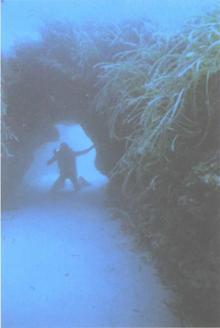 Underworld: The Mysterious Origins of Civilization
Underworld: The Mysterious Origins of Civilization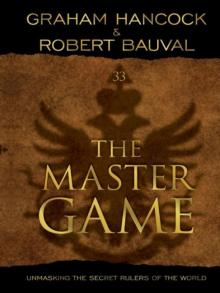 The Master Game: Unmasking the Secret Rulers of the World
The Master Game: Unmasking the Secret Rulers of the World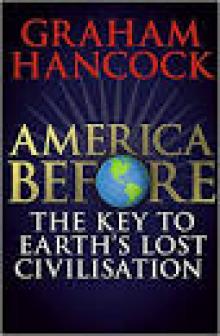 America Before
America Before Entangled
Entangled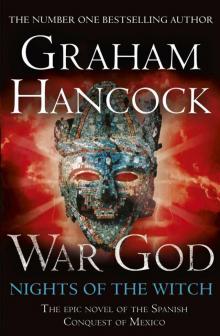 War God: Nights of the Witch
War God: Nights of the Witch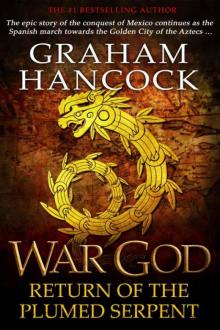 War God: Return of the Plumed Serpent
War God: Return of the Plumed Serpent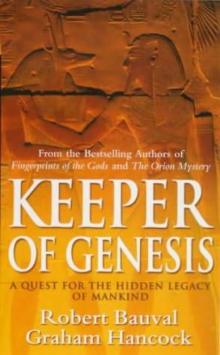 The Message of the Sphinx AKA Keeper of Genesis
The Message of the Sphinx AKA Keeper of Genesis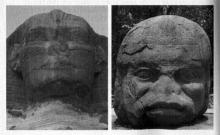 Fingerprints of the Gods
Fingerprints of the Gods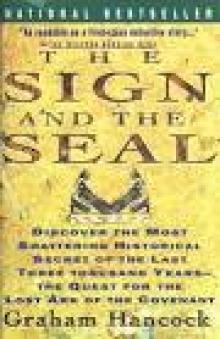 The Sign and the Seal
The Sign and the Seal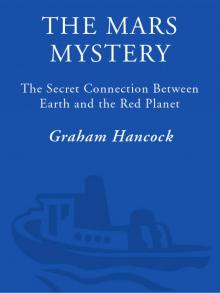 The Mars Mystery: The Secret Connection Between Earth and the Red Planet
The Mars Mystery: The Secret Connection Between Earth and the Red Planet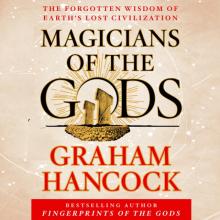 Magicians of the Gods: The Forgotten Wisdom of Earth's Lost Civilization
Magicians of the Gods: The Forgotten Wisdom of Earth's Lost Civilization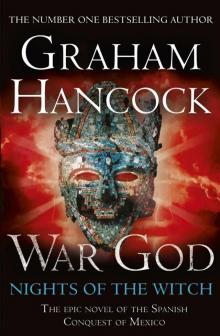 War God
War God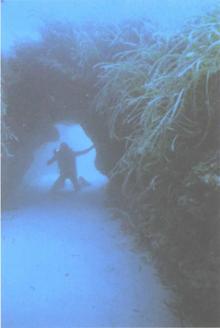 Underworld
Underworld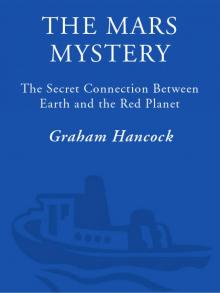 The Mars Mystery
The Mars Mystery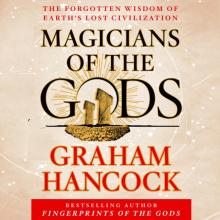 Magicians of the Gods
Magicians of the Gods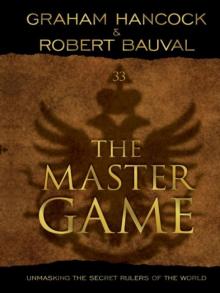 The Master Game
The Master Game